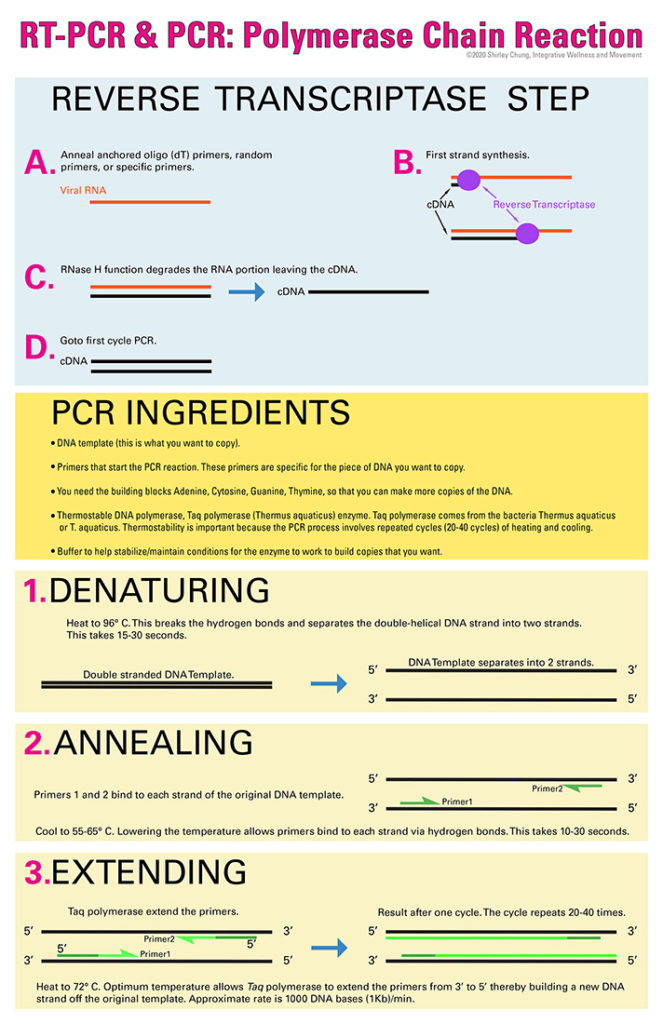If you haven’t seen our other article on PCR (polymerase chain reaction), you can find that here.
Download the high-quality poster here.
RT-PCR, Reverse Transcriptase Polymerase Chain Reaction, is a variation on the original PCR whereby the template to be amplified is RNA (e.g. genomes of RNA viruses like HIV, HCV, Ebola, SARS, SARS-CoV-2). It is a very RNA-sensitive procedure–more sensitive than northern blot and RNase protection assay.
The Taq polymerase (used in PCR) from the heat-loving bacteria Thermus aquaticus cannot work with RNA directly. Primers are added and anneal to the RNA target if present. Reverse transcriptase (an enzyme that catalyzes the building of DNA from an RNA template) is used to form a complementary DNA strand (cDNA) transcribed from the template RNA. Reverse transcriptase works between 50-60 degrees C.
The cDNA (becomes our “new” template) is then subsequently used in the PCR process. It is important that the RNA strand be high-quality and of high purity. RNase H (ribonuclease H) is an endonuclease enzyme that cleaves RNA from an RNA-DNA substrate. RNase H usually has the job of removing RNA primers from Okazaki fragments during DNA replication. Reverse transcriptase has a RNase H function. As it builds the cDNA, it also compromises the integrity of the original RNA template strand. Note that RNase H treatment is not required before proceeding to PCR.
The solution is heated to 95 degrees C to separate the RNA from the cDNA. The temperature is then lowered to anneal the primers to the cDNA. The rest of the procedure follows PCR and it’s thermocycling process.

References
- https://www.enzolifesciences.com/science-center/technotes/2017/march/what-are-the-differences-between-pcr-rt-pcr-qpcr-and-rt-qpcr?/
- https://www.thermofisher.com/us/en/home/references/ambion-tech-support/rtpcr-analysis/general-articles/rt–pcr-the-basics.html
- https://www.sigmaaldrich.com/life-science/molecular-biology/pcr/rt-pcr.html
- https://www.labce.com/spg538192_reverse_transcriptase_polymerase_chain_reaction_rt.aspx
- https://www.thermofisher.com/us/en/home/life-science/pcr/reverse-transcription/superscript-iv-one-step-rt-pcr-system/5-steps-rtpcr.html
